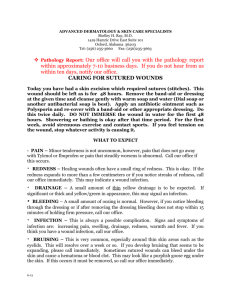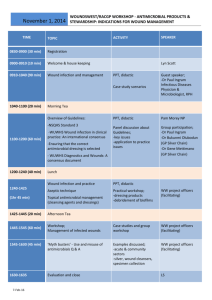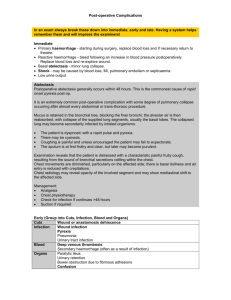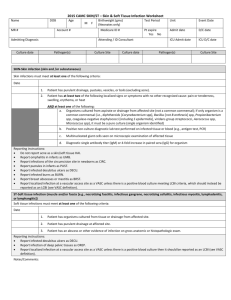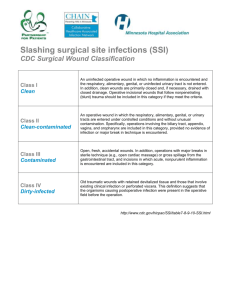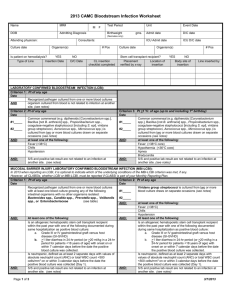Herbs for Wound Healing and Infection Control – Sam Coffman
advertisement
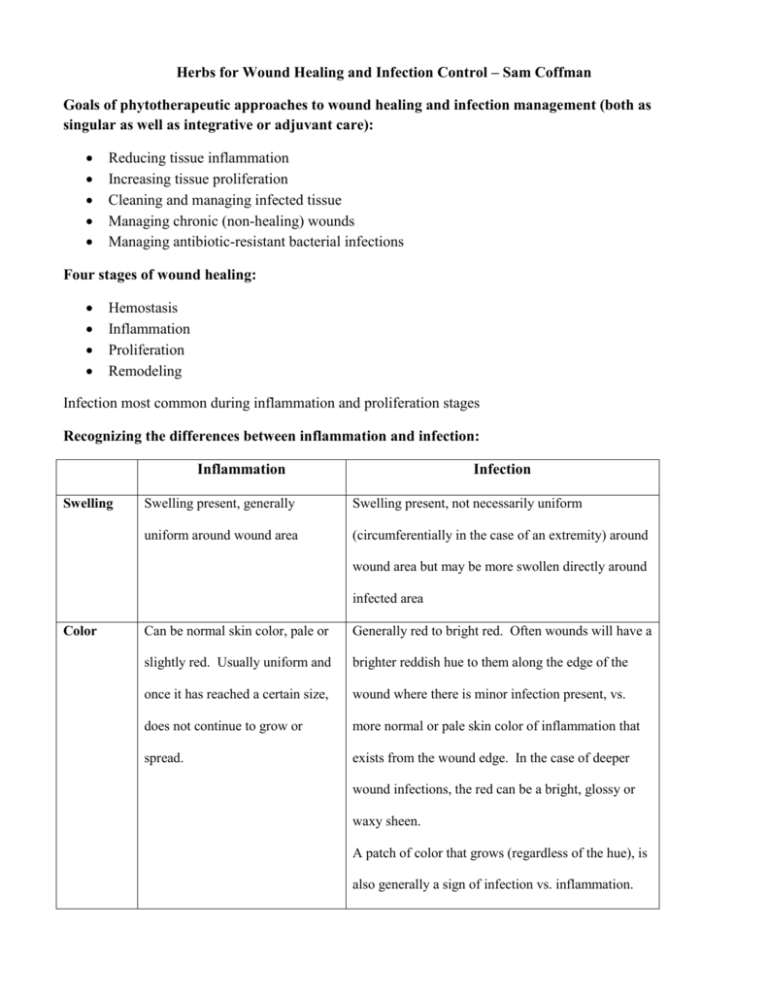
Herbs for Wound Healing and Infection Control – Sam Coffman Goals of phytotherapeutic approaches to wound healing and infection management (both as singular as well as integrative or adjuvant care): Reducing tissue inflammation Increasing tissue proliferation Cleaning and managing infected tissue Managing chronic (non-healing) wounds Managing antibiotic-resistant bacterial infections Four stages of wound healing: Hemostasis Inflammation Proliferation Remodeling Infection most common during inflammation and proliferation stages Recognizing the differences between inflammation and infection: Inflammation Swelling Infection Swelling present, generally Swelling present, not necessarily uniform uniform around wound area (circumferentially in the case of an extremity) around wound area but may be more swollen directly around infected area Color Can be normal skin color, pale or Generally red to bright red. Often wounds will have a slightly red. Usually uniform and brighter reddish hue to them along the edge of the once it has reached a certain size, wound where there is minor infection present, vs. does not continue to grow or more normal or pale skin color of inflammation that spread. exists from the wound edge. In the case of deeper wound infections, the red can be a bright, glossy or waxy sheen. A patch of color that grows (regardless of the hue), is also generally a sign of infection vs. inflammation. Drawing a boundary around the area of color with a marker is one way to determine if the color (and swelling) is spreading. Streaks of red traveling toward the heart (infection that is becoming systemic and spreading via lymph) is another specific, later (and dangerous) sign of infection. Tenderness Tender to the touch, but usually Specific pain that is generally sharper, directly on and more of a general tenderness around the infected area – especially when pressed or across the entire wound area. touched even lightly. In the case of deeper wound infection that may not be as visible on the surface, if the area has been rested and then starts to move (such as a leg wound that has been elevated), the pain can be specific, sharp and severe at first upon movement, lessening after some continued movement. Heat Exudate General heat around the injury, Increasing heat around the wound area. May start out usually low grade as low grade and then become high grade. No exudate Exudate present. Wound will usually begin to drain if it can (and should be allowed to). (pus) Systemic Usually no systemic signs (other Fever, chills, nausea, malaise, flu-like symptoms than from pain-related) (generally appearing later stage in an infection, and a sign that the infection is critical). Herbal Approaches: 1) Wound cleaning a. Irrigation (ASIF – Amount of blood loss, Shock, Irrigation, Further/Functional damage) b. Activated Charcoal i. Plaster – contact between dirty tissue and charcoal is paramount ii. Non-polar binding c. Opuntia spp. (Prickly Pear Cactus) i. Flocculant ii. Hydrophilic iii. Antioxidant iv. Anticlastogenic d. Plantago spp. (Plantain) i. Drawing/Pulling ii. Baicalin e. Verbascum thapsus (Mullein leaf) i. Drawing/Pulling f. Echinacea angustifolia and/or pallida root i. Particularly for envenomated wounds 2) Infection management a. MRSA, Staph 5’methoxyhydnocarpin (MHC) i. Berberine-containing herbs, often more in the leaf than root 1. Berberis spp. (trifoliolata, aquifolium, vulgaris, fremonii, etc.) 2. Hydrastis canadensis (Goldenseal) 3. Coptis chinensis (Chinese Goldthread) ii. Capsicum anuum iii. Efflux pump inhibition (NorA) b. Biofilms i. Structure and purpose vs. planktonic form of bacteria ii. Quorum sensing and inhibition (QSI) iii. Baicalin 1. Plantago spp. 2. Scutellaria baicalensis c. Directly antibacterial herbs i. Usnea spp. ii. Commiphora spp. iii. Larrea spp. iv. Allium spp. v. Anemopsis californica d. Indirectly antibacterial herbs i. ii. iii. iv. Echinacea spp. Phytolacca americana Ceanothus spp. Lantana camara & urticoides e. External applications i. Direct contact (plaster, packing) ii. Infusion (poultice) f. Tissue perfusion and angiogenesis, Nitric Oxide (NO), Endothelial Nitric Oxide Synthase (eNOS) and Vascular Endothelial Growth Factor (VEGF), angiogenesis, i. Centella asiatica (angiogenesis) ii. Prunella vulgaris (NO/eNOS balance) iii. Astragalus membranaceous (NO/eNOS balance) iv. Larrea spp. v. Lantana camara & urticoides vi. Angelica sinensis (VEGF) g. Other internal strategies i. Lymph & immune ii. Liver (metabolism, elimination) iii. Kidney, urinary tract (elimination) iv. Nutrition (necessity of collagen) v. Sleep
